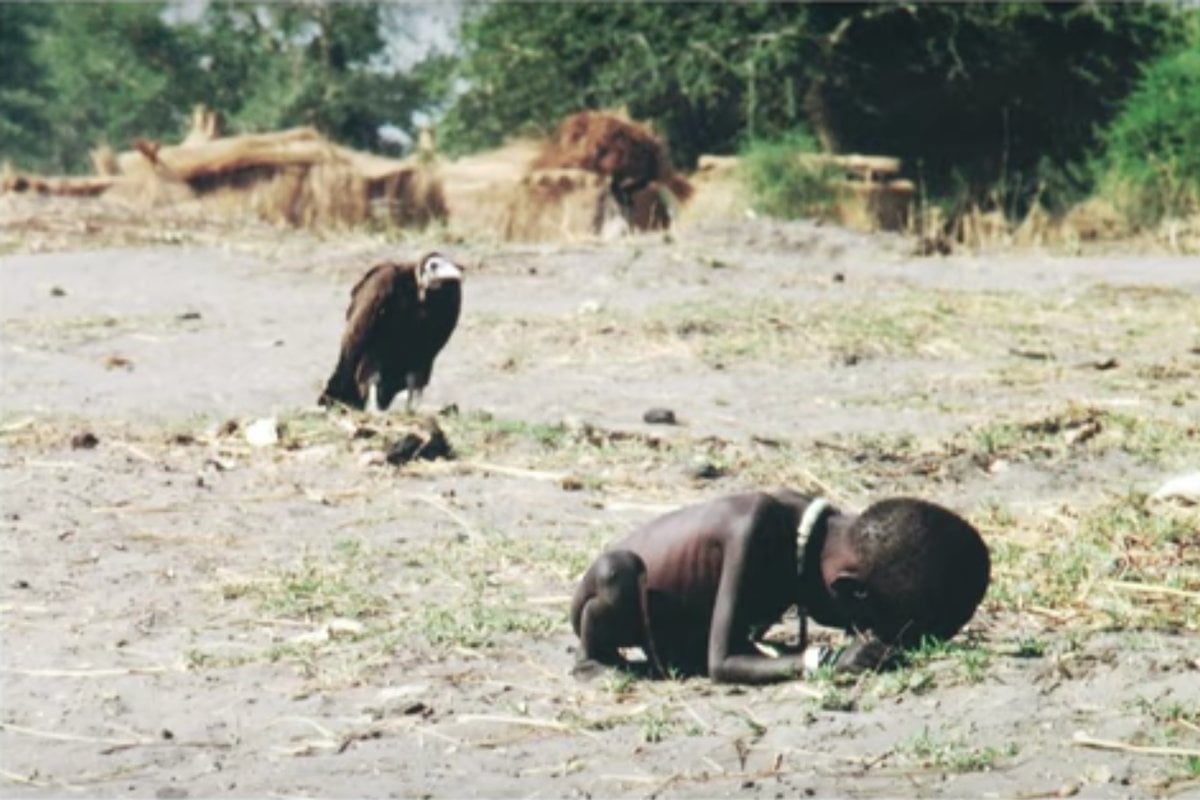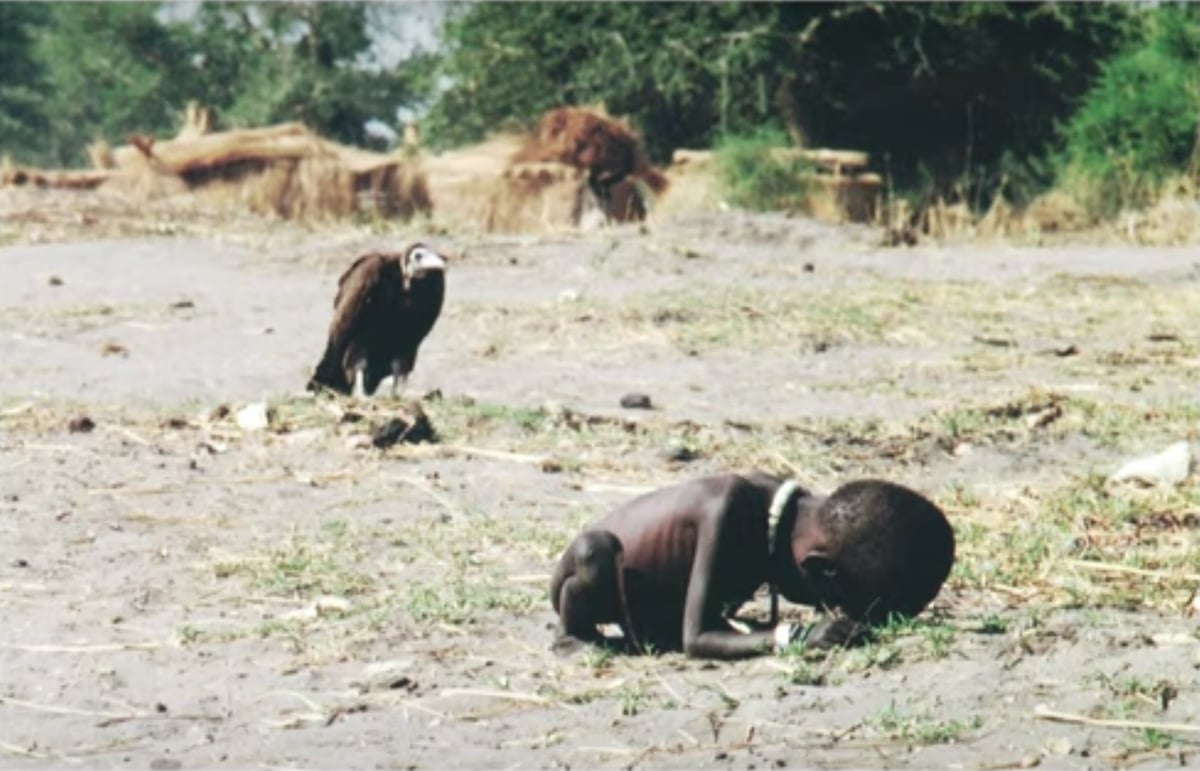
The feature image belongs to Kevin Carter/Megan Patricia Carter Trust, Sygma - Corbis (edited).
This post deals with suicide and might be triggering for some readers.
It is one of the most haunting photographs ever taken. A starving Sudanese toddler, arms and legs barely more than bones, huddles on the parched dirt, too weak to move. Nearby, a vulture watches and waits.
The photo, known as The Vulture And The Little Girl, was taken by Kevin Carter in 1993. It won him a Pulitzer Prize. But just four months after he was awarded the prestigious honour, he died by suicide. He was 33.
"I'm really, really sorry," he wrote in a note he left behind. “The pain of life overrides the joy to the point that joy does not exist."
 Image: Kevin Carter/Megan Patricia Carter Trust, Sygma - Corbis (edited) So who was Carter and what led up to him taking his own life?
Image: Kevin Carter/Megan Patricia Carter Trust, Sygma - Corbis (edited) So who was Carter and what led up to him taking his own life?


Top Comments